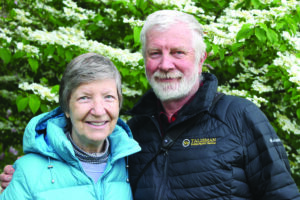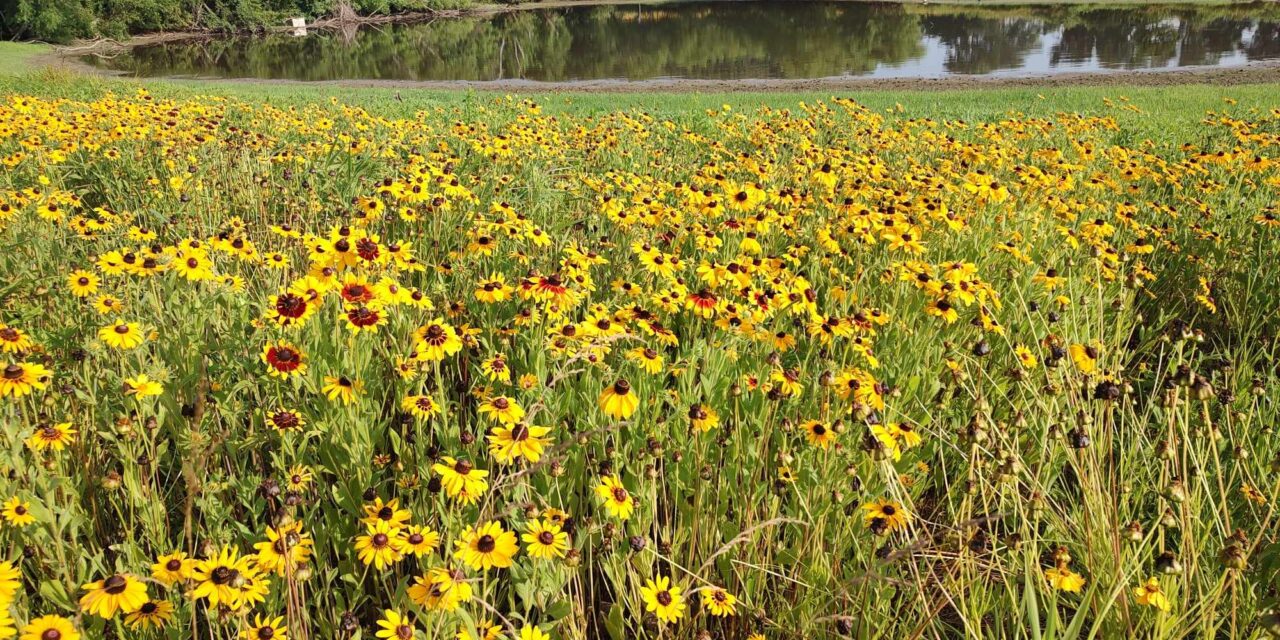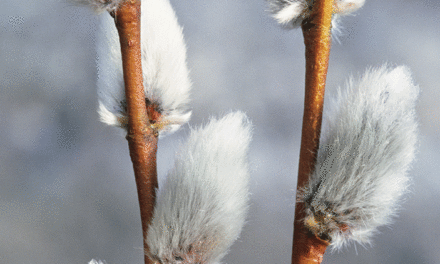
Anne Habberton and Jon Shaw said converting some of their farm to natural lands has increased the wildlife and beauty of the property. (Photo by Sean Clougherty)
There’s a lot of history at Wye Farm in Queenstown, going back centuries in Anne Habberton’s family.
Her and her husband Jon Shaw’s recent efforts to enhance wildlife and plant diversity is as much focused on the future as it is in bringing back aspects of the past.
It started in 2021 with Shaw planting an acre of wildflowers around their house to create a buffer from farm chemicals applied to the surrounding field.
Then they took a big step the next year, converting 32 acres of cropland to wildflower strips and a large meadow.
The new natural lands also complemented scores of trees and birdhouses Shaw has planted and installed on the property, more than 100 each in recent years. It’s all coalesced to bring back a bevy of songbirds, pollinators and other wildlife to the farm.
“Having the additions of the trees and natural lands has really elevated not only the wildlife quality of the farm but our quality of life,” Habberton said.
The couple enjoys watching through binoculars from their home’s kitchen or deck, or getting up close with daily walks through the meadow or horseback rides on Shaw’s Paso Finos.
Strategically placed chairs and benches along the paths allow for spending extended time watching, photographing and absorbing the sounds of nature.
“It just transformed our landscape here at the farm. The range of flora and fauna just multiplied,” shaw said. “We couldn’t be more delighted with the ultimate endgame.”
Habberton and Shaw worked with the Washington College Natural Lands Project and USDA’s Farm Service Agency to install the project.
The Natural Lands Project has helped to convert 1,200 acres of marginal farmland into diverse native meadows, wetlands, and forests since 2015.
Dan Small, Natural Lands Project coordinator advised them on what species of plants and flowers to put in the strips and meadow. Two USDA conservation programs — Conservation Reserve Program and Conservation Reserve Enhancement Program — incentivized the project with much of the funding to get it installed.
Shaw said their initial plan was to place several buffer strips of grasses and wildflowers in multiple fields of their farm, but after consulting with Small, they opted for a single larger block that would provide more safety to small wildlife from predators and having it all in one place, literally in their backyard, made it much more accessible and visible.
“In June and July, the house is just surrounded” by flowers, Shaw said. “From the back deck you can actually see it all.”
More than 20 species of warm season grasses, wildflowers and other native plants were used to establish the strips, meadow and pollinator patches.
About a third of the area was tilled first and the seeded with the balance planted with a no-till seed drill, similar to what many farmers use in planting small grain crops like wheat and barley.
“The first year it looked like the Serengeti because there were so many grasses in the seed bank, and we worried it would overtake the flowers.”
In time, however, they found the opposite was occurring. The flowers start popping out in late May with Black Eyed Susans and goat’s beard and continue into November with spotted beebalm the wrap up the year’s bloom.
Periodic mowing constitutes the bulk of the project’s ongoing maintenance, Shaw said.
Along with spot spraying invasive weeds that spring up, he mows about half the meadow in a checkerboard pattern each year to continue to provide some refuge to wildlife and keep plenty of seed heads standing for foraging birds through the winter.
With the natural lands thriving, the farm has become a destination for small groups of birdwatchers.
Along with several bluebird pairs, wrens and swallows, more hawks and eagles are frequenting the farm and they’ve had sighings of a rufous hummingbird and the first white winged dove seen on the Eastern Shore in 16 years, Shaw said.
“The hope is we’ll get quail moving again, too” he added.
Next month, they’re showcasing the project with a June 15 field day of workshops and walking tours.
After Shaw posted on social media their intention to have an event and gauge interest, he said he got more than 500 responses.
To keep it manageable, the event will be capped at two groups of 150 people, he said, repeating the schedule in morning and afternoon sessions.
Habberton said the field day and other outside visits help continue her mother’s legacy of sharing the farm’s attributes with others, something she and her sister and co-owner Alice want to uphold.
The event’s reach will go father still as money raised at the field day through registration costs and donations will go to Talisman Therapuetic Riding, a full-time adaptive horseback riding center in Grasonville where Shaw is an avid volunteer.
“We rely mainly on donations and sponsors. Every sing lesson that comes through the gate is subsidized,” said Noelle Douglas, executive director at Talisman. “Getting more funds in the door is crucial to getting more people help.”





